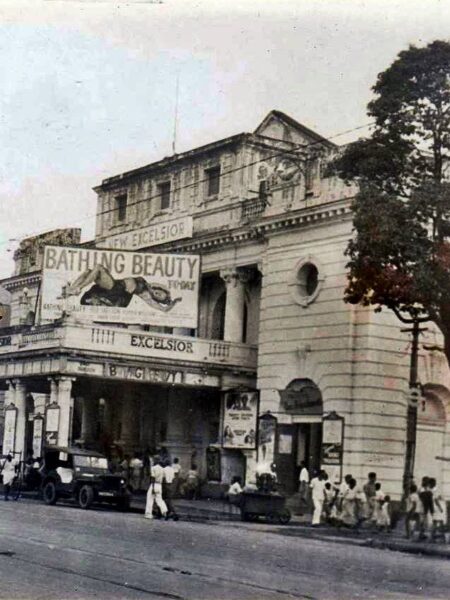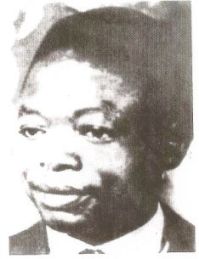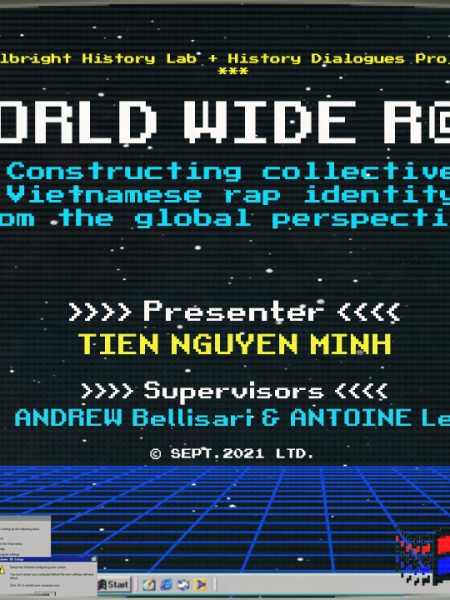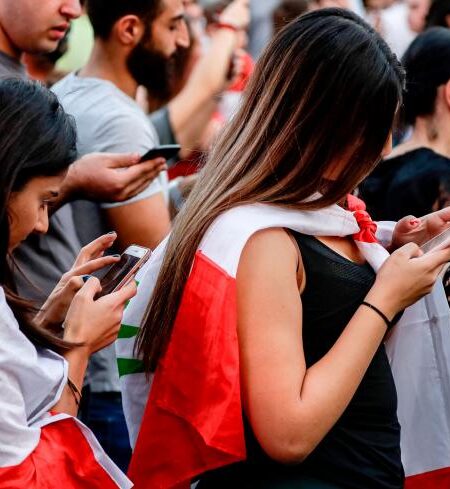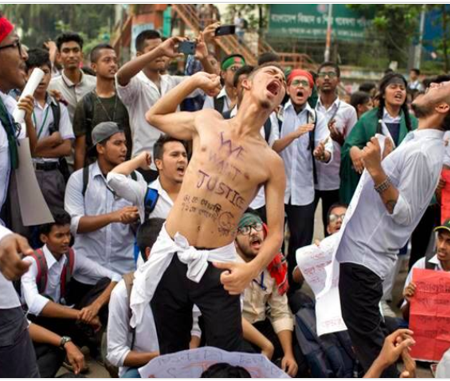Introduction
History is marked by the passing of events, deeds, and mobilities which are often backed up by movements and ideologies. Among these latter stands nationalism, which increasingly took over during the 19th century, spurring patriotic sentiments all over Europe. In Italy, the first nationalist turmoil began in 1799, encouraged by Enlightenment ideas – at the basis of the French Revolution – and increased throughout the Napoleonic period. Starting from the “People’s Spring” in 1848, a series of revolutionary attempts took place in Italy. However, despite the efforts carried out by people like Giuseppe Mazzini, King Charles Albert of the Kingdom of Piedmont-Sardinia, and to some extent the Pope Pius IX, the mission of driving the Austrians out of the Italian Peninsula failed. It is only in 1860 that a real nationalist change was coming to light, thanks to Garibaldi’s “Expedition of the Thousand”[1], and smaller insurgences such as the “Lucanian Insurrection” of August 16th, 1860. On March 17th, 1861 – less than a year later – Italy was a united, single nation with its own tricolour flag.
The case study discussed in this essay, therefore, is about the 1860 “Lucanian Insurrection,” started in Corleto Perticara, which allowed the peninsula’s unification, and brought together the various patriots fighting for the national cause. However, the leading figures were mainly intellectuals, who contributed to widen the gap between upper-middle and lower classes. The aim of this essay, then, is to answer the following questions: what is nationalism and how did it change Europe? Did local insurrections help the creation of a common – national – background? Finally, was it successful in uniting people in spirit at a local level? On the basis of the answers it provides, the essay’s purpose is to contribute to scholarly debates about Italy’s nationalism and the importance of local insurgencies like the 1860 Lucanian Revolt. Moreover, it would like to question nationalism as a “common ideology”, highlighting the consistent, almost exclusive role intellectuals had.
To do so, five interviewees from Corleto Perticara provide knowledge on the matter, alongside personal insights. Coming from different backgrounds, as they are historians, students, and culturally or politically active citizens of Corleto Perticara, they help make clearer both the local and the national picture.
Nations and Nationalism(s)
Before delving into why and how Europe was shaken through the late 18th and entire 19th century, it is important to define what nationalism means. According to the Merriam-Webster Dictionary[2], nationalism is “loyalty and devotion to a nation; […] especially: a sense of national consciousness”. Hence, it is strictly related to the idea of nation, which, according to Epediaa[3], is a “group of people united by common origin, history, culture, ethnicity, or language”. Nonetheless, how do people come to recognize themselves as a country?
There are a variety of factors that bind individuals together, such as the geographical territory, collective memories and thus, the idea of a common past. Yet: are nations and nationalisms modern or can they be identified already in the past? One answer can be found in the perennialist vision, which traces back nations to the pre-modern world[4]. It is true that ethos of membership and group identities exist from ancient times, but were they national in shape? Modernists suggest that both nations and nationalisms are the product of the 19th century Europe’s spirit of modernity: they exist because they are needed by the modern industrial world[5]. By looking at what they perceive as the “wave of nationalism” of 1830-70, it is possible to recognize efforts carried out to reach the political – final – mission of creating a nation that would grant membership to a community. Indeed, as the time passed and the world became increasingly interconnected, the sense of belonging had become a guarantee of being included in a bigger, global context.
In Europe, it was the 1789 French Revolution and the consequent Napoleonic period that encouraged the rise of nationalism, to which the first Reign to respond was Italy, and within it the Republic of Naples[6]. This sentiment was based on the principles of Enlightenment, which were reason, liberty, progress, and constitutional government. Examples of constitutional monarchy could be identified already in the post-Glorious Revolution England, when the first political parties were created, and the Parliament affirmed its power. Indeed, the 19th Century movement of the Carbonari[7] – in which Giuseppe Mazzini partook[8] – aimed at a constitutional government, while opposing foreign rule[9]. After being arrested, Mazzini, who was a Genoese activist believing in the nation’s unification as a destiny to fulfil, coordinated its political activism firstly from France, and then from Great Britain, where the Chartist Movement[10] was asking for the recognition of rights for the lower classes. Here, he met intellectuals as John Stuart Mill[11], who supported him in the aim of reaching a national unity for Italy[12].
Hence, the expansionistic aims of Napoleon and its Civic Code[13], the 19th Century reconfiguration of Europe, and the spread of news acted as a blueprint to create sovereign nations, fostering ideas of “exclusivity” and – in the most aggressive cases – even racism. These ideas could travel thanks to the communicational and technological improvements of the Second Industrial Revolution, backing the political exchanges held by intellectuals.
Italy’s First Reactions and Insurrections in the South
1799 can be considered the first step toward a “new Italy”, although the Country-to-be was still divided into Reigns under either foreign or monarchical power. In the Northern territories the control was in the hands of the Austrian Empire, followed by the Reign of Piedmont-Sardinia ruled by King Charles Albert, the Papal States under Pope Pius IX, until reaching the Southern Reign of the Two Sicilies ruled by the Habsburgs. However, after the French invasion by Napoleon Bonaparte, a sentiment of Italian nationalism started to arise, alongside a general feeling of discontent that was due to the post-1815 economic recession, hitting especially the working class[14]. Inhabitants, then, started to ask for a modern State – which would be achieved only in 1861 -. In this span of time, important endorsers of nationalist developments were Giuseppe Mazzini and King Charles Albert of the Kingdom of Sardinia, as the only monarch disposed to change his government (still based on conservatism)[15]. Nevertheless, while the first seeds of the unification were slowly sprouting, every attempt carried out in 1848 was unable to send the Austrians away from the peninsula, thus not achieving unification[16]. A crucial figure in the success of the revolt would have been the Pope, both for the geographic location of the Papal States, and for the spiritual power he had on citizens. In 1846 there was Pope Pius IX, who seemed a liberal, Enlightened clergyman – yet, not enough to offer his troops in favour of the cause.
In the Reign of the Two Sicilies, meanwhile, king Ferdinand I – clearly against liberalism – restored his power in 1816[17], provoking the 1820-21 “Constitutional Revolution”, which obtained a Constitution, although for a short time[18]. In the Basilicata region, which was the most extended province of the Reign of Italy in the mainland[19], the “Spring of the People” was occurring during the years 1848-49[20]. These revolutionary uprisings – which affected all Europe – were against the absolutistic tendencies of monarchs. In 1848, the king Ferdinand II established a Parliament closer to his interests, hence removing authority from the moderate-constitutional government. In this aftermath, Lucanians – especially in Potenza – met in the “Circolo Costituzionale Lucano” (Lucanian Constitutional Circle), which was connected to Naples. The purpose was to promote a dialogue with the Monarchy, whose power was recognized, but had to be flanked by people’s well-being. In this framework, the line pursued was still moderate, differently from the “Provisional Government for the Province of Basilicata”, which was seen as an “act of war” against the king by the moderates. Nonetheless, the reaction of the Bourbons was violent in each case[21].
During the following years, Naples would maintain a fundamental role, keeping relations with Giacinto Albini – a political activist from Montemurro (Potenza), as well as the commissioner of the Basilicata province-. Anyhow, any other effort to organize a “rapid” revolution failed, and the focus turned toward the installation of a network of Local Committees[22].
The Role of Corleto Perticara and its Citizens
1860 is the key year for the Insurrection. In fact, after the victory of Garibaldi’s forces in Sicily, patriotic sentiments increasingly rose once again[23], this time supporting the Savoia Monarchy.
In August, Giacinto Albini – who in the meantime had set the headquarters of the Committee in Corleto Perticara[24] -, Camillo Boldoni (an official of the Piemontese army, then head of the insurrectional militia)[25] and Nicola Mignogna (a patriot specialized in the juridical profession who would become pro-dictator of the provisional government set in Potenza)[26] met in this little town to arrange the Revolt’s organization. The plan’s news spread and finally, on August 16th, 1860 they proclaimed Italy’s unity in the middle of the square, today’s “Piazza del Plebiscito” (Plebiscite Square).
As the interviewee Valeria Giorgio[27] (as a council member of Corleto Perticara’s administration) suggests, the symbols of the Bourbonic Monarchy were replaced by the ones depicting Italy’s Reign, sparking revolutionary impulses throughout the whole South. Thereafter, by crossing the “Portico della Bandiera” (Porch of the flag) people marched toward Potenza, which was reached on August, 18th of that year, to meet with patriots from the region of Calabria. Vincenzo Lardo[28], ex-Headmaster of the Comprehensive School of Corleto Perticara, even ventures to say that Corleto acted as the “Capital of the Lucanian Insurrection”, surely due to its central position in the region.
By looking at the Reports of the Insurrectional Central Committee of Corleto Perticara, established on June 21st, 1860[29], it is possible to grasp the vibrant patriotism that aimed at the unification of the Reign under the Constitutional Regime of king Vittorio Emanuele[30]. The Committee was subordinated to the one set in Naples, where Pietro Lacava was a secretary holding connections with Carmine Senise (a senator of liberal principles, who arranged the “Committee of order” in Corleto[31]) in Corleto Perticara[32]. Lacava, bonded to the activism of Albini – considered in turn to be the “Head of the Insurrection”[33] – was a key figure in the regional administrative life. He was a political patriot born in Corleto Perticara, then becoming secretary of the pro-dictatorial regime[34] established in Potenza. Concerning his political career, he became general secretary of the Ministry of Public Works[35], until reaching the appointment as State’s Minister[36]. Thus, he went further than dealing exclusively with the local Lucanian political life, although his career originates there, at home. Moreover, he studied both national and foreign intellectuals’ – like the English constitutionalist Stuart Mill’s – ideas, to address the problem of the electoral system[37], which he tried to bring to the “continental” standard.
However, every individual cited so far belongs to the upper-medium classes – the only ones allowed in the “Circolo Costituzionale Lucano”[38]. Therefore: is it appropriate to talk about this historical event as “people’s revolt”?
The uprising took place during the same day of an important religious celebration: the one extolling Saint Rocco, which rounded up many believers. The date was not picked by chance, rather chosen to boost insurrectional ideals[39] and profit from the crowd’s presence. Yet, despite this, as reported by Lardo[40], the revolt was mainly a matter of a noble class that fought for its interests, while excluding the lower classes. The dissatisfaction of these latter formed – in the years following the proclamation of a unitary Reign and the Pro-dictatorial regime established in Potenza for the institutional annexation of the province[41] – another phenomenon: the “Brigantaggio” (Brigandage), a movement of revolt[42]. Brigantaggio acted as a civil war, with people rioting against the new post-1861 system[43], since it did not improve their condition as its intentions suggested. Women took place at this initiative likewise: all rioted in the name of their rights[44] making the Insurrection a controversy, since it proved unable to unite citizens’ spirit.
Memory and Celebration
The Insurrection, therefore, and the subsequent unification of Italy’s reign, did not spur a unanimous response. It provoked both triumphal and harsh reactions: the first by the middle-upper classes, the latter by the lower, popular ones. By looking at the historical occurrences that happened through the 19thCentury, it might be argued that Corleto Perticara played nonetheless a fundamental role in allowing the national unification, due to its intellectuals, and to some extent, its citizens. Yet: is it an event remembered and celebrated nowadays at a local and national level?
Among the interviewees there are discrepancies regarding their assessment of the event, which reflect these individuals’ roles within the local community. As for the local remembrance of the Insurrection, the Corleto Perticara administration’s member, Valeria Giorgio[45], talks about a great sentimental attachment among the citizens toward this page of history, which is demonstrated through participation, although they may not really give the right value to the event itself. Furthermore, she talks about the intention of the townhall to start again festivities in its honor, alongside starting a study of the archives in the near future. Similarly, the historian Immacolata Venturi[46] recognizes that inhabitants are conscious of their historical identity, which is commemorated through local initiatives, such as documentary exhibitions.
On the other hand, Vincenzo Lardo[47], Giuseppe Gravallotti[48] – the President of a local cultural association, “Istinto Lucano” (Lucanian Instinct) – and the young student Antonio De Angelis[49] lament a lack of proper recognition, as well as a deficiency and shallowness in organizing cultural initiatives that would broaden people’s knowledge. According to them, there should be a deeper effort to promote what happened before the actual unification. Lardo[50], as previously mentioned, emphasizes the counter-perspective of the peasantry as well, since the uprising is often remembered as a popular one, while it has been led mainly by the nobility, instead. Moreover, he thinks that an extent of attendance concerning contemporary celebrations on the historical matter may be due to a “cultural folklore”, in which the event is the promoter of a sense of community that makes people feel particularly attached to their hometown, while Gravallotti[51] addresses the presence of “personal goals” that sometimes act as an “engine” to plan recurrences.
At a national level, instead, all the interviewees agree on the unfair negligence about it on documents, debates, and celebrations. In Italian school books, in fact, there is much more emphasis on the bigger events – such as the “Expedition of the Thousand” -, while not giving the right credit to regional events, as well as to the popular counterpart. In this regard, Antonio De Angelis[52] confirms the scant attention today’s history classes give to such an episode, demonstrating himself to have a limited knowledge on the matter.
Discussion
The considered events suggest that it was the 19th century transnational “wave of nationalism” that created the Italian nation, rather than the other way around. This sentiment helped build a constitutional monarchy and bring people together under the same king, while sharing the same territory. To do so, interventions from local communities proved to be fundamental, since the lack of cohesion caused the failure of the 1848 first attempts of unification. Hence, one might say that Corleto Perticara sparked a revolutionist spirit in the South, materializing the project arranged with the Committee located in Naples. It was influential, then, in letting the “Meridione” (Southern Italy) step in the national context, and fulfil the political mission envisaged.
Citizens, however, were still divided into classes, and not united in spirit as they were geographically. Indeed, the Risorgimento was a period often portrayed as a new – positive – time in history; yet: it does not necessarily imply that it was positive on all counts. Arguably, the peninsula’s unification led to the emancipation of its citizens from foreign rule, but it failed to improve the harsh economic and social conditions in which lower classes were forced to live. In this way, the peasant class went through the Revolts in a passive way, responding with a movement shaped on their needs.
Finally, the practice of storytelling has a potential likewise, determining the mobility of a narrative, as well as the memory of a particular event. This is what happened through the spreading of stories and ideologies from France and Great Britain to Italy; while news created a bond among the nations that were emerging in the European context. For example, Pietro Lacava kept on beholding events abroad and discussing connections with other countries. In a letter sent to Albini in 1861, indeed, he emphasized the revolutionary fervor that was shaking Poland up[53], at that time under the Russian Tsarist control; at the same time, he disclosed the confidence he felt regarding Russia’s recognition of the Italian reign[54].
Moreover, narratives are used to recall a past occurrence. As for my interviewees’ general perception about the Insurrection and the consequent national unification, it is mainly positive. The historical revolt is presented as the “dawn of a new era”, referencing an event worthy of celebrations and memories, which helped make Corleto Perticara a great town. They all recognize their Italian roots, although Valeria Giorgio[55] stresses the importance of the European nature that citizens – as Italians – have. Furthermore, they also feel bound to a local community – except for the student Antonio[56] -, demonstrating that there is a connection between the local and national framework, strong enough to avoid drawing distinctive identities between them.
Conclusion
Conclusively, this essay aimed at finding the global influences that provoked the 19th century “wave of nationalism”, proving them to be mainly the 1789 French Revolution, the Napoleonic era, and the ideas promoted by the Enlightenment, spread through improved institutional infrastructures. These influences played a role in shaping ideas and patterns of behaviour in various sociocultural and political contexts, both in the continental Europe and in local towns, such as in Corleto Perticara.
Subsequently, it tried to uncover and understand the link between the local 1860 “Lucanian Insurrection” and the national 1861 Unification of Italy, demonstrating the importance of “small” revolts that acted at a local level, but were backed by a broader spirit. Finally, it tried to address the question of nationalism in a critical way, in order to deconstruct the static idea of the nation as the ultimate goal to achieve, and inviting the readers to engage with historical accounts in a mindful and informed manner.
[1] The “Expedition of the Thousand” was a 1860 campaign led by Giuseppe Garibaldi to allow Italy’s unification.
Britannica, T. Editors of Encyclopaedia. (April 28th, 2022). “Expedition of the Thousand.” Encyclopedia Britannica. [accessed: online]. https://www.britannica.com/event/Expedition-of-the-Thousand
[2] Meriam Webster. “nationalism”. [accessed: online]. https://www.merriam-webster.com/dictionary/nationalism
[3] Epeedia. “Difference Between State and Nation”. [accessed: online]. https://pediaa.com/difference-between-state-and-nation/
[4] Smith, Anthony D. (2000) “The Nation in History: Historiographical Debates about Ethnicity and Nationalism”. POLITY PRESS. United Kigndom.
[5] Ibid.
[6] Racioppi, G. “Storia di Moti di Basilicata e delle Provincie Contermine nel 1860”. Valentina Porfidio Editore.
[7] “Carbonari” were members of a 19th Century secret society promoting liberal ideas.
Britannica, The Editors of Encyclopaedia. (November 15th, 2012). “Carbonari”. Encyclopedia Britannica. [accessed: online]. https://www.britannica.com/topic/Carbonari
[8] Holt, E. Crawshaw. (March 6th, 2022). “Giuseppe Mazzini.” Encyclopedia Britannica. [accessed: online]. https://www.britannica.com/biography/Giuseppe-Mazzini
[9] Britannica, The Editors of Encyclopaedia. (November 15th, 2012). “Carbonari”. Encyclopedia Britannica. [accessed: online]. https://www.britannica.com/topic/Carbonari
[10] The Chartist Movement was a democratic movement asking for male suffrage.
Brain, J. “The Chartist Movement”. Historic UK. [accessed: online]. https://www.historic-uk.com/HistoryUK/HistoryofBritain/Chartist-Movement/
[11] John Stuart Mill was a 19th Century liberal philosopher.
Macleod, C. (2016) “John Stuart Mill”. Stanford Encyclopedia of Philosophy. [accessed: online]. https://plato.stanford.edu/entries/mill/
[12] Sullam Levis, Simon. “Mazzini, Giuseppe”. Treccani. Il Contributo italiano alla storia del Pensiero: Filosofia (2012). [accessed: online]. https://www.treccani.it/enciclopedia/giuseppe-mazzini_%28Il-Contributo-italiano-alla-storia-del-Pensiero:-Filosofia%29/
[13] The Napoleonic Code is a civil code issued by Napoleon Bonaparte in 1804.
History.com Editors. (February 9th, 2010). “Napoleonic Code approved in France”. A&E Television Networks. Updated on: March 15th, 2022. [accessed: online]. https://www.history.com/this-day-in-history/napoleonic-code-approved-in-france
[14] Hill, Jonathan, R. (2005). “The revolutions of 1848 in Germany, Italy, and France”. Senior Honors Theses & Projects. 45. [accessed: online].
https://commons.emich.edu/cgi/viewcontent.cgi?article=1044&context=honors
[15] Ibid.
[16] Ibid.
[17] The Editors of Encyclopaedia Britannica. “Ferdinand I”. Britannica. [accessed: online]. https://www.britannica.com/biography/Ferdinand-I-king-of-the-Two-Sicilies
[18] Ibid.
[19] Racioppi, G. “Storia di Moti di Basilicata e delle Provincie Contermine nel 1860”. Valentina Porfidio Editore.
[20] Venturi, I. “L’insurrezione lucana del 1860 fra storia e storiografia”. Villani Editore.
[21] Ibid.
[22] Ibid.
[23] Ibid. pp. 47.
[24] D’Andria, A. “Potenza e l’Insurrezione Lucana del 1860”. www.comune.potenza.it [accessed: online]. https://www.google.com/url?sa=t&rct=j&q=&esrc=s&source=web&cd=&ved=2ahUKEwjlvNz_hpb4AhXIRvEDHQFSBmsQFnoECAUQAQ&url=http%3A%2F%2Fwww.comune.potenza.it%2Fattachments%2Farticle%2F864%2FPotenza_1860.doc&usg=AOvVaw1cabYTeWQ8LT2d4YEz3zmf
[25] Conte, A. (2010). “Mignogna, Nicola”. Treccani. Dizionario Biografico degli Italiani. Vol. 74. [accessed: online]. https://www.treccani.it/enciclopedia/nicola-mignogna_%28Dizionario-Biografico%29/
[26] Ibid.
[27] Valeria Giorgio, interview by author, online interview, May 7, 2022.
[28] Vincenzo Lardo, interview by author, online interview, May 4, 2022.
[29] “Primo centenario della Rivoluzione Lucana, Comitato di Corleto”. Verbali del Comitato Centrale, Insurrezione di Corleto Perticara”. pp. 9.
[30] Ibid.
[31] Senato della Repubblica. “Senise Carmine”. Senato della Repubblica. [accessed: online]. http://notes9.senato.it/web/senregno.nsf/e56bbbe8d7e9c734c125703d002f2a0c/1cb9ac43916534d84125646f0060848c?OpenDocument
[32] Castronuovo A., Simoncelli V., Verrastro D., Verrastro V. (2013) “Un’orma non lieve”. Dibuono Edizioni.
[33] Ibid.
[34] Menghini, M. (1933). “Lacava, Pietro”. Treccani. Enciclopedia italiana. [accessed: online]. http://156.54.191.164/enciclopedia/pietro-lacava_%28Enciclopedia-Italiana%29/
[35] L’Unificazione. (2011). “Lacava, Pietro”. Treccani. [accessed: online]. https://www.treccani.it/enciclopedia/pietro-lacava_%28L%27Unificazione%29/
[36] Ibid.
[37] Ibid.
[38] Venturi, I. “L’insurrezione lucana del 1860 fra storia e storiografia”. Villani Editore.
[39] Ibid.
[40] Vincenzo Lardo, interview.
[41] Venturi, I. “L’insurrezione lucana del 1860 fra storia e storiografia”. Villani Editore.
[42] Iacovella, Anna. (Summer, 2013). “I briganti: Gruppo multiculturale nel sud dell’Italia”. American Association of Teachers of Italian. Italica, Vol. 90, No. 2. pp. 196-209.
[43] Ibid.
[44] Ibid.
[45] Valeria Giorgio, interview.
[46] Immacolata Venturi, interview by author, online interview, May 4, 2022.
[47] Vincenzo Lardo, interview.
[48] Giuseppe Gravallotti, interview by author, online interview, May 3, 2022.
[49] Antonio De Angelis, interview by author, online interview, May 5, 2022.
[50] Vincenzo Lardo, interview.
[51] Giuseppe Gravallotti, interview.
[52] Antonio De Angelis, interview.
[53] Castronuovo A., Simoncelli V., Verrastro D., Verrastro V. (2013) “Un’orma non lieve”. Dibuono Edizioni. pp. 166.
[54] Ibid.
[55] Valeria Giorgio, interview.
[56] Antonio De Angelis, interview.
Bibliography
- Brain, J. “The Chartist Movement”. Historic UK. [accessed: online]. https://www.historic-uk.com/HistoryUK/HistoryofBritain/Chartist-Movement/
- Britannica, The Editors of Encyclopaedia. (November 15th, 2012). “Carbonari”. Encyclopedia Britannica. [accessed: online]. https://www.britannica.com/topic/Carbonari
- Britannica, T. Editors of Encyclopaedia. (April 28th, 2022). “Expedition of the Thousand.” Encyclopedia Britannica. [accessed: online]. https://www.britannica.com/event/Expedition-of-the-Thousand
- Castronuovo A., Simoncelli V., Verrastro D., Verrastro V. (2013) “Un’orma non lieve”. Dibuono Edizioni.
- Conte, A. (2010). “Mignogna, Nicola”. Treccani. Dizionario Biografico degli Italiani. Vol. 74. [accessed: online]. https://www.treccani.it/enciclopedia/nicola-mignogna_%28Dizionario-Biografico%29/
- D’Andria, A. “Potenza e l’Insurrezione Lucana del 1860”. comune.potenza.it [accessed: online].
- “Difference Between State and Nation”. [accessed: online]. https://pediaa.com/difference-between-state-and-nation/
- Iacovella, Anna. (Summer, 2013). “I briganti: Gruppo multiculturale nel sud dell’Italia”. American Association of Teachers of Italian. Italica, Vol. 90, No. 2. pp. 196-209.
- Hill, Jonathan, R. (2005). “The revolutions of 1848 in Germany, Italy, and France”. Senior Honors Theses & Projects. 45. [accessed: online]. https://commons.emich.edu/cgi/viewcontent.cgi?article=1044&context=honors
- com Editors. (February 9th, 2010). “Napoleonic Code approved in France”. A&E Television Networks. Updated on: March 15th, 2022. [accessed: online]. https://www.history.com/this-day-in-history/napoleonic-code-approved-in-france
- Holt, E. Crawshaw. (March 6th, 2022). “Giuseppe Mazzini.” Encyclopedia Britannica. [accessed: online]. https://www.britannica.com/biography/Giuseppe-Mazzini
- L’Unificazione. (2011). “Lacava, Pietro”. Treccani. [accessed: online]. https://www.treccani.it/enciclopedia/pietro-lacava_%28L%27Unificazione%29/
- Macleod, C. (2016) “John Stuart Mill”. Stanford Encyclopedia of Philosophy. [accessed: online]. https://plato.stanford.edu/entries/mill/
- Menghini, M. (1933). “Lacava, Pietro”. Treccani. Enciclopedia italiana. [accessed: online]. http://156.54.191.164/enciclopedia/pietro-lacava_%28Enciclopedia-Italiana%29/
- Meriam Webster. “nationalism”. [accessed: online]. https://www.merriam-webster.com/dictionary/nationalism
- Racioppi, G. “Storia di Moti di Basilicata e delle Provincie Contermine nel 1860”. Valentina Porfidio Editore.
- Smith, Anthony D. (2000) “The Nation in History: Historiographical Debates about Ethnicity and Nationalism”. POLITY PRESS. United Kigndom.
- “Primo centenario della Rivoluzione Lucana, Comitato di Corleto”. Verbali del Comitato Centrale, Insurrezione di Corleto Perticara”. pp. 9.
- Senato della Repubblica. “Senise Carmine”. Senato della Repubblica. [accessed: online]. http://notes9.senato.it/web/senregno.nsf/e56bbbe8d7e9c734c125703d002f2a0c/1cb9ac43916534d84125646f0060848c?OpenDocument
- Sullam Levis, Simon. “Mazzini, Giuseppe”. Treccani. Il Contributo italiano alla storia del Pensiero: Filosofia (2012). [accessed: online]. https://www.treccani.it/enciclopedia/giuseppe-mazzini_%28Il-Contributo-italiano-alla-storia-del-Pensiero:-Filosofia%29/
- The Editors of Encyclopaedia Britannica. “Ferdinand I”. Britannica. [accessed: online]. https://www.britannica.com/biography/Ferdinand-I-king-of-the-Two-Sicilies
- Venturi, I. “L’insurrezione lucana del 1860 fra storia e storiografia”. Villani Editore.





